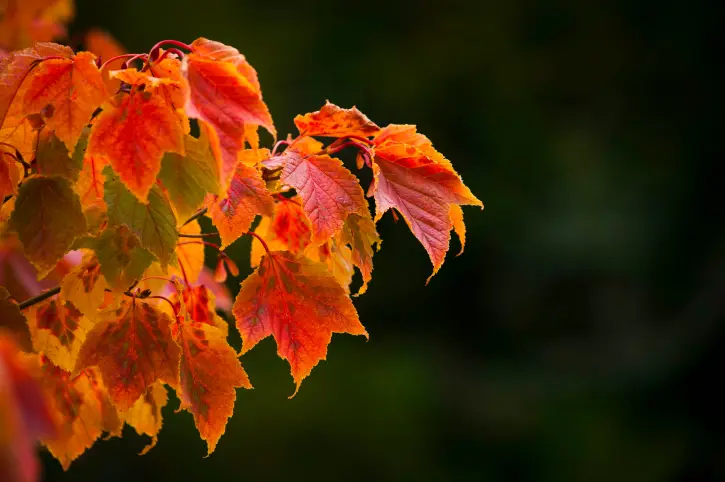Awesome autumn leaves: colour chemistry explained
Autumn: we can stop complaining about the heat, but still enjoy the outdoors without a hundred layers! Conkers litter the paths, pumpkin-spiced everything returns, and you can step back into your favourite pair of boots. But we all know the best bit is when the leaves give the colourful spring flowers a run for their money.
We all love the season's spectacular hues. But why do green leaves turn to red or orange, and how do the trees know when summer is over? We break down the science for you below.
Science made simple

Despite the technical terminology, leaf science is pretty simple. Basically, it's about the balance of pigments. Different quantities determine the colours we see.
When there’s more of one pigment, leaves appear certain colours. When it's reduced, a different colour becomes most visible.
Kaleidoscope of colours
During spring and summer, chlorophyll helps plants with the process of photosynthesis. This turns carbon dioxide, water and the light from the sun into sugars that feed a tree. The green from chlorophyll masks other colours throughout the sunnier months.
Then, as nights start to grow longer and less sunlight is available, this signals to trees that autumn is on the way. The production of chlorophyll slows and then stops completely. This is when the golden hues we love start to appear.
A group of chemicals called carotenoids are always found in leaves. These help protect plants from sun damage. Once chlorophyll's dominant green is reduced, fiery oranges become much bolder.
Xanthophyll, a type of carotenoid, is responsible for the yellow colours we see in plants. This sticks around long after the chlorophyll has disappeared.
Golden orange hues also come from carotenoids. These pigments start disappearing at the same time as chlorophyll does, but at a much slower rate, so their colours last well into autumn.
Beta carotene is a type of carotenoid, and is responsible for giving plants and many edible goodies their orange colouring. You can find it in foods such as sweet potato, carrots and apricots.

While all trees have chlorophyll and carotenoids, not all produce anthocyanin, the pigment that causes leaves to turn red. Anthocyanin is only found during part of a tree’s growing season and is produced from sugars trapped in leaves as the tree prepares to shed them.
You’re more likely to see brighter reds in a year where spring and summer have been warmer, drier and sunny.
Awesome autumn destinations
So, now you know why autumn produces such a spectacular show, it’s time to get out and see the season's colours for yourself. There are more places to experience autumn’s golden hues in Scotland than we can count, but we've put together some inspiration in our top 10 favourite places to see autumn colours, with help from staff around the country.
Leaf your troubles behind

Leaves aren’t just pretty to look at – you can have lots of fun with them as well. Have a look at our autumn activities to see some of our favourite things to do with your seasonal finds.